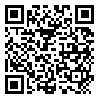BibTeX | RIS | EndNote | Medlars | ProCite | Reference Manager | RefWorks
Send citation to:
URL: http://jhsw.tums.ac.ir/article-1-3-en.html
Introduction: According to the literature, a large number of people working in industries and service providing personnel, such as firefighters, physicians, and nurses, are shift workers. The spread of shift working in industrial societies and the incidence of the problems resulting from shift working have caused the researchers to conduct studies on this issue. The present study also aimed to investigate melatonin and cortisol circadian rhythms in the security guards of Shiraz University of Medical Sciences, Shiraz, Iran.
.
Material and Method: The present study was conducted among 20 security guards of Shiraz University of Medical Sciences. In order to collect the required data, blood samples were taken from the participants in different times of the day (1, 4, 7, 10, 13, 16, 19, and 22) and cortisol and melatonin levels were determined using radioimmunoassay and enzyme immunoassay techniques, respectively. Then, the data were entered into the SPSS statistical software (v. 16.0) and analyzed using One-Way ANOVA.
.
Result: The results showed that as the intensity of light increased during night time, the level of plasma cortisol increased, as well. Besides, no statistically significant difference was found between the plasma cortisol levels in natural light and 4500-lux light. On the other hand, a significant difference was observed between the level of plasma cortisol in natural light and 9000-lux light as well as 4500- and 9000-lux lights. The study findings also showed that as the intensity of light increased at night, the level of plasma melatonin decreased. In addition, a statistically significant difference was found between the plasma melatonin levels in natural light and 4500-lux light. Nevertheless, no significant difference was observed between the plasma melatonin levels in natural light and 9000-lux light as well as 4500- and 9000-lux lights.
.
Conclusion: The present study aimed to investigate the subsequences of shift working in the security guards of Shiraz University of Medical Sciences and showed that occupational exposure to bright light could affect some biological markers, such as melatonin and cortisol secretion.
| Rights and permissions | |
 |
This work is licensed under a Creative Commons Attribution-NonCommercial 4.0 International License. |



